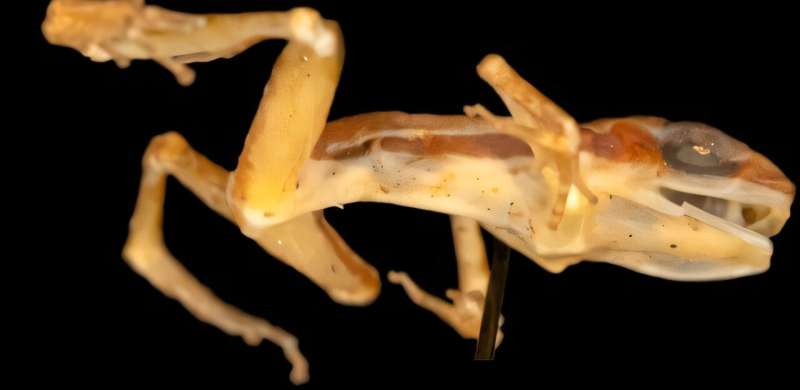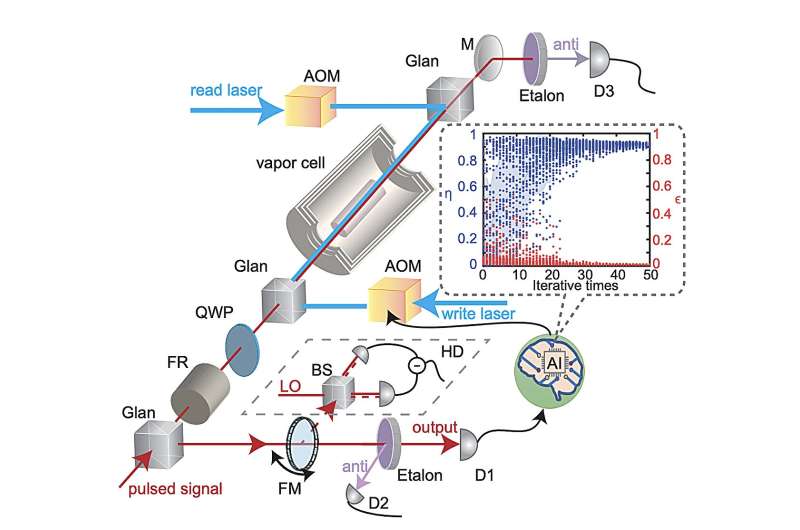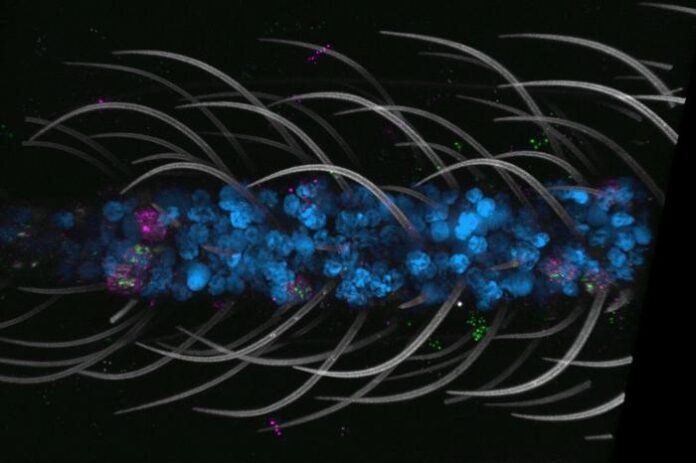Researchers have identified a new species of rocket frog, named Dryadobates erythropus, based on a single specimen collected 62 years ago in Curitiba, Brazil. This discovery, detailed in the journal Zootaxa, raises concerns that the species may already be extinct in the wild due to habitat loss and the absence of additional specimens.
The specimen was originally collected by American herpetologist Doris M. Cochran during a 1963 expedition to Brazil. It is housed at the Smithsonian Institution‘s National Museum of Natural History in Washington, D.C. The frog measures approximately 14 millimeters and is part of the recently classified genus Dryadobates, which includes at least 13 species, four of which have gone extinct between the 1960s and 1980s.
According to Taran Grant, a professor at the University of São Paulo (USP) and the lead author of the study, the species is considered “probably extinct” as no other specimens have been found despite extensive surveys in São Paulo and Paraná over the last six decades.
Historical Context and Discovery
Once a vibrant area of biodiversity, the Tarumã neighborhood of Curitiba has transformed into an urban landscape filled with buildings and commercial spaces. Grant notes the significant changes to the habitat that once supported the species. The absence of the D. erythropus in current surveys suggests its likely extinction, a conclusion supported by the characteristics of its living relatives, which are typically abundant and easily located in the wild.
The naming of the frog reflects both Greek mythology and local culture, with “Dryadobates” deriving from the word for nymphs and “erythropus” referring to “red foot,” a nod to local agricultural workers. Other species in the genus have similarly been named after their regional origins, emphasizing the connection to specific areas within Brazil.
Grant’s investigation into the historical context of the specimen involved examining Cochran’s travel diary, which provided crucial information about the location where the frog was collected. This diary clarified that the frog was collected in a large field in Tarumã, contradicting earlier assumptions that it might have been sourced from Rio de Janeiro.
Museomics and Future Implications
The study of this extinct species highlights the importance of museomics, a field that utilizes historical DNA (hDNA) from museum specimens to enhance our understanding of biodiversity. Grant attempted to extract DNA from the specimen but encountered challenges due to its degraded state. As he explained, “We were unable to find sufficient genetic material from the frog, only contamination from human DNA and bacteria.”
Despite the current limitations, Grant remains optimistic that advancements in technology may eventually allow for genetic identification in the future. He emphasizes that this research serves as a reminder of the need to protect natural habitats and the species residing within them.
The identification of Dryadobates erythropus not only honors the contributions of Cochran and her contemporaries but also underscores the ongoing threats faced by many species due to habitat destruction. “If it weren’t for them, we wouldn’t know that we once had this species,” Grant concluded, reflecting on the significance of historical research in understanding and preserving biodiversity.
This study adds to the growing body of knowledge regarding the extinction history of the Dryadobates genus and calls attention to the urgent need for conservation efforts in Brazil and beyond.







